
-
Find the right food for your pet
Take this quiz to see which food may be the best for your furry friend.
Find the right food for your pet
Take this quiz to see which food may be the best for your furry friend.
Featured products
 Adult Healthy Cuisine Roasted Chicken, Carrots & Spinach Stew Dog Food
Adult Healthy Cuisine Roasted Chicken, Carrots & Spinach Stew Dog FoodDelicious roasted chicken paired with tender vegetables in a succulent stew
Shop Now Small & Mini Savory Stew with Chicken & Vegetables Dog Food
Small & Mini Savory Stew with Chicken & Vegetables Dog FoodA delicious complement to the nutrition of Science Diet Small & Mini 7+ dog food
Shop Now Adult 7+ Perfect Digestion Chicken, Whole Oats & Brown Rice Recipe Dog Food
Adult 7+ Perfect Digestion Chicken, Whole Oats & Brown Rice Recipe Dog FoodScience Diet's breakthrough nutrition supports ultimate digestive well-being & healthy microbiome for dogs age 7+
Shop NowFeatured products
 Adult 7+ Senior Vitality Chicken & Vegetable Stew Cat Food
Adult 7+ Senior Vitality Chicken & Vegetable Stew Cat FoodImproves Everyday Ability to Get Up & Go
Shop Now Adult 7+ Tender Tuna Dinner Cat Food
Adult 7+ Tender Tuna Dinner Cat FoodWith delicious chunks in a decadent gravy
Shop Now Adult Savory Entrée Can Variety Pack Cat Food
Adult Savory Entrée Can Variety Pack Cat FoodPrecisely balanced nutrition with the delicious taste of savory minced chicken to help fuel the energy needs of cats during the prime of their life
Shop Now -
Dog
- Dog Tips & Articles
-
Health Category
- Weight
- Food & Environmental Sensitivities
- Urinary
- Digestive
- Joint
- Kidney
-
Life Stage
- Puppy Nutrition
- Adult Nutrition
- Senior Nutrition
Cat
- Cat Tips & Articles
-
Health Category
- Weight
- Skin & Food Sensitivities
- Urinary
- Digestive
- Kidney
-
Life Stage
- Kitten Nutrition
- Adult Nutrition
Featured articles
 Why Are Dogs and Cats So Cute?
Why Are Dogs and Cats So Cute?If waggy puppy dog tails and furry kitten yawns make you swoon, you're not alone. Why are cats so cute? And, dogs too! Let's find out!
Read More Do Dogs and Cats have Belly Buttons?
Do Dogs and Cats have Belly Buttons?Learn whether cats & dogs have belly buttons like humans, what the function is, and if there are any health concerns associated with it.
Read More Does My Pet Hate Me?
Does My Pet Hate Me?Learn tips for bonding with your pet if you've ever thought, 'My dog doesn't like me, or 'Why do I have a standoffish cat?'
Read More -


So you want to keep your cat indoors and out of harm's way, but you've noticed them staring longingly out the window — especially as the weather turns warmer and more critters are out and about. A DIY cat enclosure offers the best of both worlds. Cat patios, or "catios," let your cat relish the great outdoors with grass under their paws and the breeze on their fur.
Walking your cat outside on a cat halter and leash offers many benefits, too, but it can take some time to get used to. Learning how to build a catio opens up the world to your cat, which can lower stress, relieve boredom and improve overall health.
What Is a Catio?
A portmanteau of "cat" and "patio," catios come in many sizes and configurations with one overarching purpose: to provide a safe outdoor experience for cats with a protective barrier that keeps danger at bay. You can purchase a ready-made catio, but learning how to build a catio yourself has advantages. Namely, you get to design the perfect DIY cat enclosure for your cat's needs — and take pride in your accomplishment.
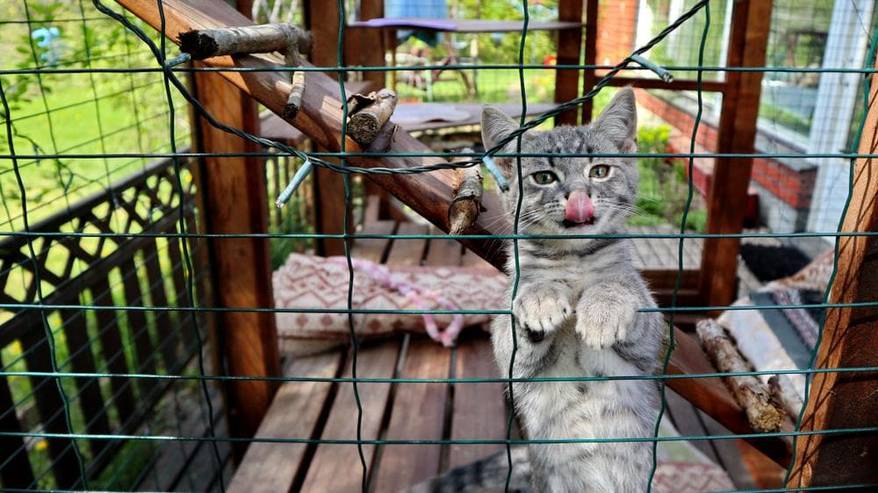
How Can Catios Benefit Your Cat?
Catios allow your cat to enjoy the benefits of the outdoors without many of the usual risks. Providing your cat with a secure outdoor enclosure also protects bunnies, birds and squirrels from your mighty feline hunter.
Keeps Cats Safe Outdoors
Free roaming is associated with significant risks for cats. Many veterinarians encourage cat lovers to keep their cats exclusively indoors for safety reasons. Cats who roam outside can become lost, encounter dangerous wildlife, like coyotes, and catch parasites or other diseases from feral cats. They may also get into conflicts with cats or other animals and become wounded.
And then there's cars. According to one review of the risks associated with free-roaming cats, traffic accidents pose the largest risk, reporting a 70% fatality rate for cats involved in traffic accidents. Outdoor cats' higher risk of injury or death from car accidents, animal attacks and diseases can all contribute to shorter lifespans.
Provides Environmental Enrichment
While indoor confinement keeps cats safe, it can also increase stress by inhibiting their ability to explore, hunt and play. If you have multiple indoor cats, crowding increases the potential for unwanted behaviors, including inter-cat aggression and litter box problems.
Environmental enrichment provides indoor-only cats with resources that help alleviate stress and improve quality of life at any age. Enrichment supports cats' sensory experiences, encouraging them to play, scratch, bite, sniff out fun smells and engage with the world around them. For example, you can offer your cat a box of crunchy leaves to play in or a puzzle toy filled with healthy treats.
Catios offer an even more intense natural experience for your cat. From the security of their DIY cat enclosure, they can encounter fresh scents; nibble treats or cat grass; watch and chase bugs; and feel the wind ruffling their fur.


Tasty Tips
What to Consider When Planning Your Catio
You have many options for your catio. To narrow down your plans, consider your house and your cat (or cats) to decide on the best design for your unique situation. Just remember that, while a well-built catio is a safe place for your cat, you should always supervise them to ensure they're comfortable.
Location
You can build a catio on your porch, off a window, on your lawn or in your garden. Wherever you build it, ensure your cat has access to shade to keep cool on summer days — or include shade covers in your design. Similarly, some cats may relish a light rain, while others won't want to risk getting their toes damp. So, plan for weather when deciding on your catio's location.
Size
Consider how much space you want to carve out on your patio or designated area for a catio. Do you have a single cat or several? Decide if you want your DIY cat enclosure to be pet-exclusive or if you want it to be large enough for human entry.
Style
Catios come in many styles, including window boxes, multistory builds, wraparound enclosures and tunnels that ramble throughout the backyard. Deciding on the style you want can help you determine whether you can build your design yourself or if you might be better off hiring someone to help. Cats love cubbyholes and perches with lots of scratch opportunities. Design with litter box and water access in mind so your cat has easy access to the essentials.
Door Placement
Offering come-and-go access through a window works great if you have the option. If you don't, think about how to get your cat safely to and from their catio. You also need easy access to the area for cleaning purposes or to retrieve your cat if they're reluctant to come back inside when it's time.
Your Cat's Age and Preferences
A kitten who wants to jump and climb will have different needs than a sedate senior cat who wants to perch and watch the world. Think about your cat's physical condition and what they enjoy. You can customize their enclosure with cat-safe plants, vertical or horizontal scratching posts, ladders and shelves to accommodate their preferences.
Think about future cats before investing in your build so you can satisfy potential new kitties as they arrive.
Safe and Sturdy Materials
DIY cat enclosure materials often include a mix of wood, PVC frames, plastic, fabrics, fencing wire and wire mesh screens. Choose sturdy materials that will contain your cat without risk of escape or injury. Think about the determined cat who might be tempted to wiggle out for a closer look (or whiff) of a passing skunk. Other cats love to scratch screens, so take your cat's behaviors into account. When in doubt, ask a professional at your local hardware store for advice on materials.
Building a DIY Cat Enclosure
Keep in mind that some cats may take longer to adjust and enjoy the catio experience, particularly older cats, so be patient. Cats live healthier, longer lives when protected from danger, and a catio provides emotional and physical enrichment that can enhance the bond you share. So whether you learn how to build a catio yourself, buy one ready-made or hire a professional, your cat will love you for it.


Christine O'Brien is a writer, mom, and long-time cat parent whose two Russian Blues rule the house. Her work also appears in Care.com, What to Expect, and Fit Pregnancy, where she writes about pets, pregnancy, and family life. Find and follow her on Instagram and Twitter @brovelliobrien.
Related products

Improves Everyday Ability to Get Up & Go

Precisely balanced nutrition with the delicious taste of savory minced chicken to help fuel the energy needs of cats during the prime of their life

With delicious chunks in a decadent gravy

Supports energy level and beautiful fur in mature cats
Related articles
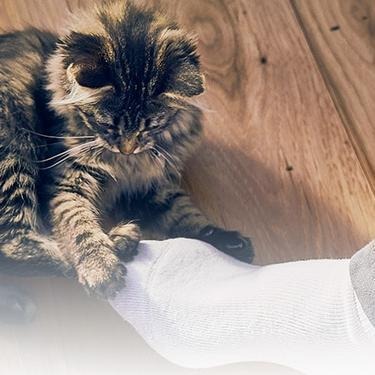
Discover which cat toys games your feline friend might like, and how they are great sources of exercise. Explore our library of articles to learn more.
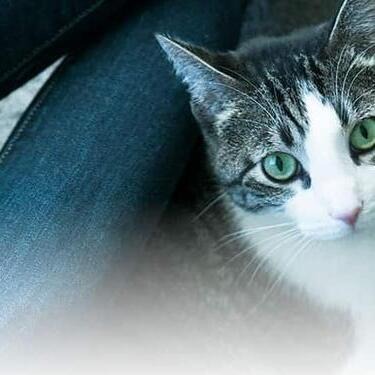
Brushing your cat's teeth is just as important as brushing your own. Learn signs or oral health problems in your cat and how to avoid them.
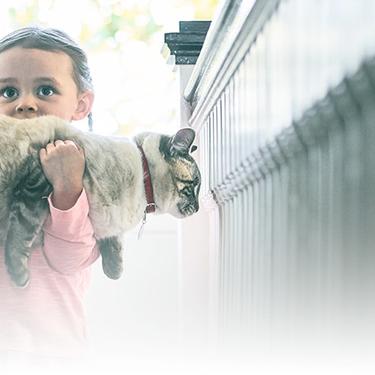
Discover how to identify cat sensitive skin and what you can do to help your cat thrive from head to paw.
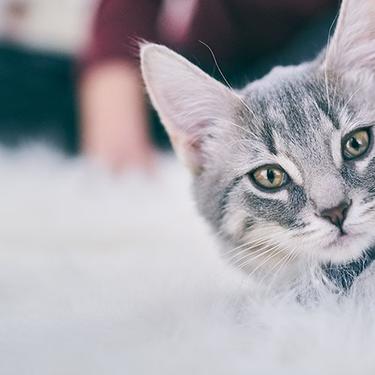
Discover the benefits of Hill's line of kitten foods and how they provide complete and balance nutrition for growing kittens.

Put your cat on a diet without them knowing
Our low calorie formula helps you control your cat's weight. It's packed with high-quality protein for building lean muscles, and made with purposeful ingredients for a flavorful, nutritious meal. Clinically proven antioxidants, Vitamin C+E, help promote a healthy immune system.
Put your cat on a diet without them knowing
Our low calorie formula helps you control your cat's weight. It's packed with high-quality protein for building lean muscles, and made with purposeful ingredients for a flavorful, nutritious meal. Clinically proven antioxidants, Vitamin C+E, help promote a healthy immune system.

